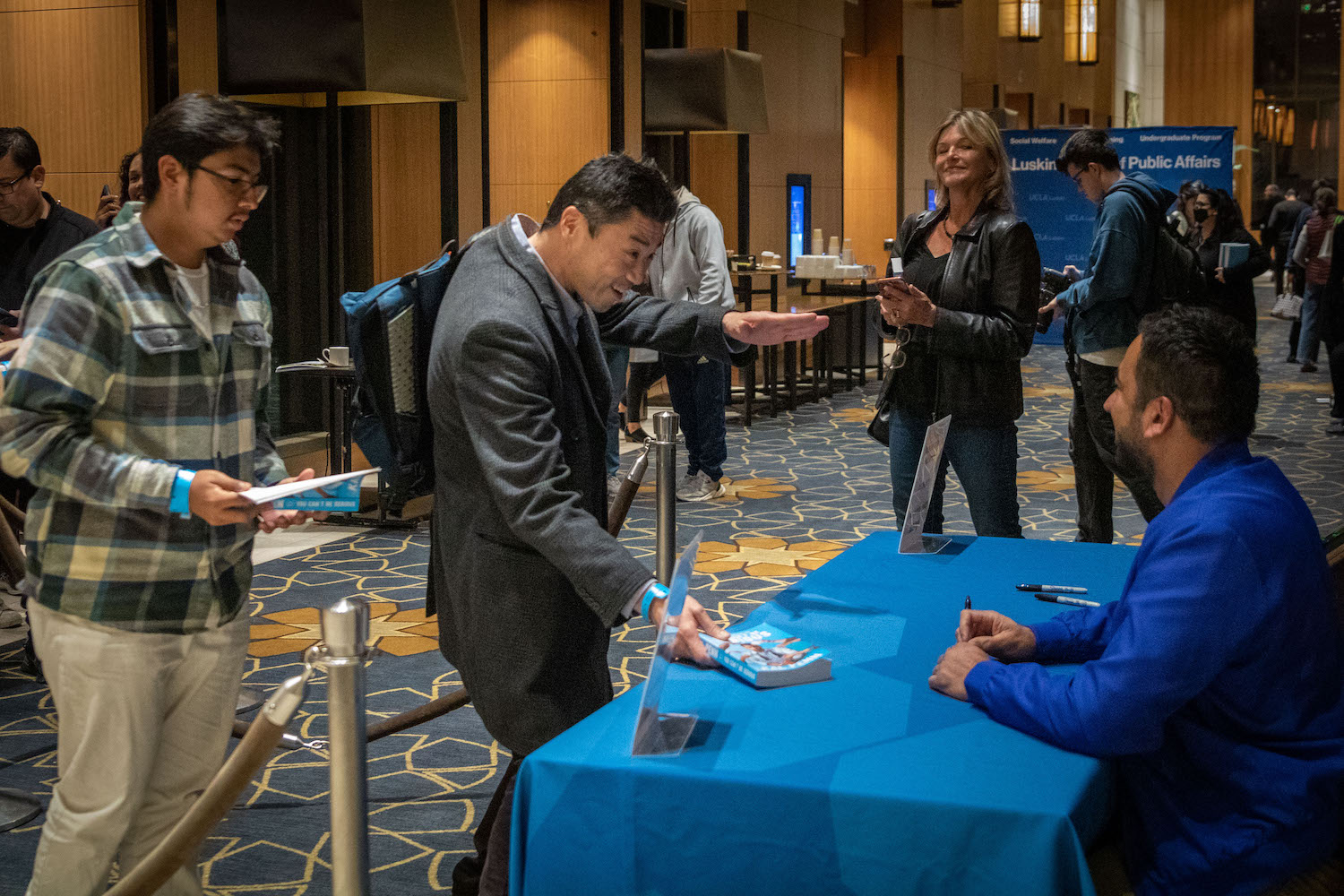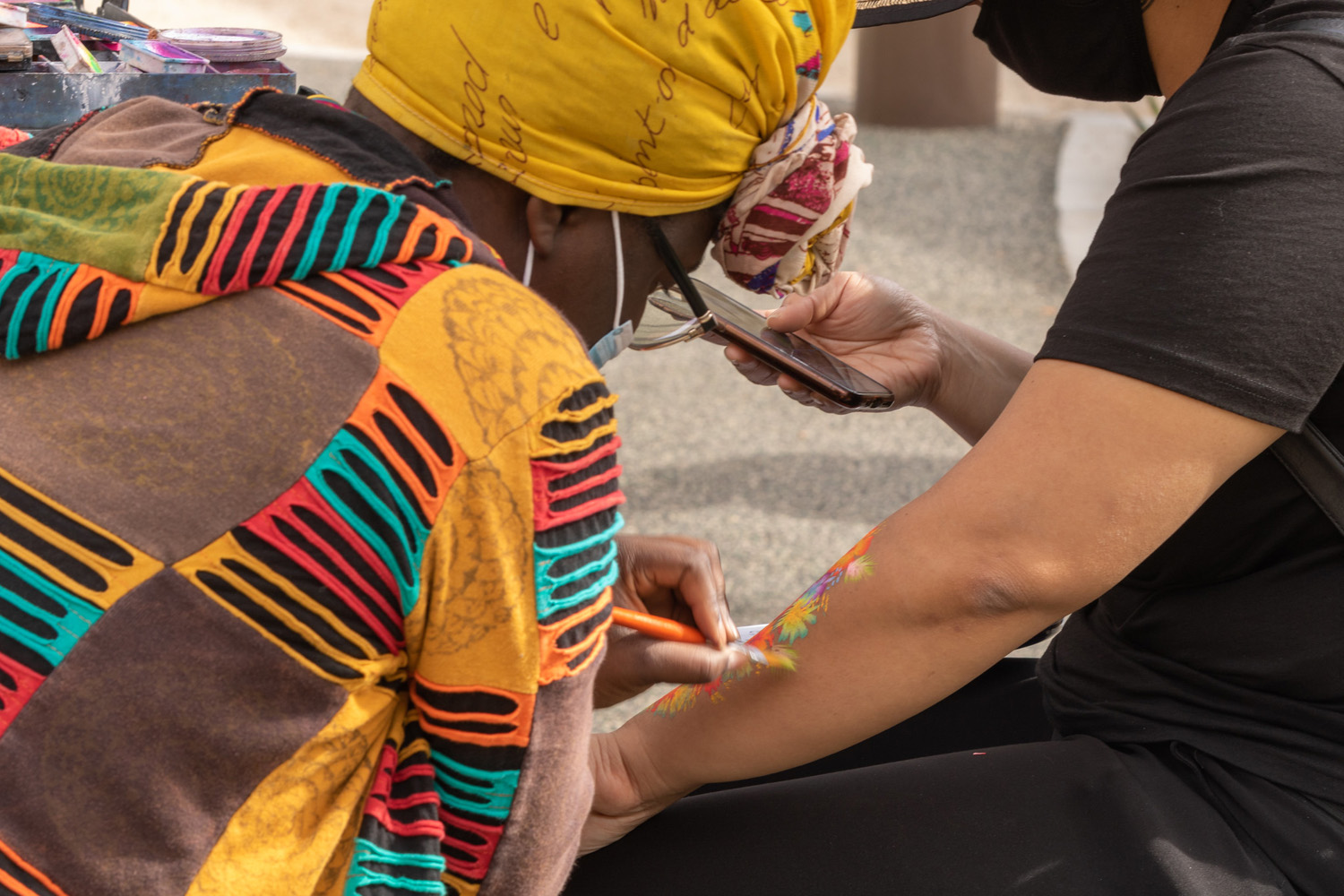By Mary Braswell
Voting rights advocates are moving from state to state to challenge a rash of new laws limiting access to the ballot box. But what if there were a more sweeping, permanent and celebratory way to protect American democracy?
That vision is within reach, two prominent political observers told a UCLA audience, if the nation is willing to make casting a ballot both a right and a civic obligation.
A system of mandatory voting would be akin to requirements that Americans serve on a jury, wear a seatbelt or educate their children, said E.J. Dionne and Miles Rapoport, authors of the new book “100% Democracy: The Case for Universal Voting.”
Rather than a burden, they envision exercising the right to vote as a treasured experience woven into the fabric of American culture.
“Defenders of democracy have been on the defensive for too long. … We want Americans to think about something broader, something affirmative, something that’s ahead of us,” Dionne said. “Why not have a system that can be broadly inclusive and make our country the democratic model that we aspire to be?”
Rapoport cited poll results showing that 61% of respondents consider voting both a right and a duty. “We think that there is something in that value that people hold that we can really build on,” he said.
Dionne and Rapoport took the stage April 7 at UCLA’s Kerckhoff Hall as part of the Meyer and Renee Luskin Lecture Series. They were joined by moderator Sonni Waknin, an attorney with the UCLA Voting Rights Project, which is currently in litigation around the country to protect access to the ballot.
‘Why not have a system that can be broadly inclusive and make our country the democratic model that we aspire to be?’ — E.J. Dionne, co-author of “100% Democracy”
The authors spoke about the 2020 election cycle, marked by efforts to suppress the vote amid a contentious presidential contest but also by accommodations made necessary by the COVID-19 pandemic. Many jurisdictions allowed citizens to vote early, vote by mail and use drop boxes, among other reforms, and a record 66% of U.S. voters participated.
But that number would be dwarfed by the 90% turnout anticipated under a system in which citizens must vote or face a modest penalty, Rapoport said.
More importantly, he added, “the people who actually vote would be fully representative of the country as a whole, as opposed to now, where the voting rolls are skewed away from young voters, away from low-income voters, away from voters in communities of color.”
Mandatory voting would also transform political campaigns that now deploy “enrage to engage” tactics to mobilize a candidate’s base, the authors argued. If “likely voters” include everyone of age, candidates would spend less energy on polarizing messages to a small slice of the electorate.
“One of the beautiful things about this system is you create incentives to reach the less engaged so they get political information,” Dionne said. “Yes, some of that is campaign propaganda. But there are a lot of studies that show that voters, in comparing campaign propaganda, actually can figure a lot of things out.”
In their book and at the lecture, the authors drew on decades of experience in politics, journalism and academia. Dionne is a senior fellow at the Brookings Institution, a columnist for the Washington Post, a professor at Georgetown University and a visiting professor at Harvard. Rapoport, a former elected official in Connecticut state government, is a senior fellow at the Harvard Kennedy School’s Ash Center for Democratic Governance and has also served as president of Demos and of Common Cause.
While acknowledging that they generally support progressive candidates, the authors stressed that universal voting would not favor one party over the other. As one example, they pointed to the robust turnout in 2020 that led to a 10-seat gain for the GOP in the U.S. House of Representatives.
The authors also noted that the universal vote has worked smoothly in 26 countries as diverse as Greece and Uruguay. In Australia, which pioneered the system nearly 100 years ago, election day has taken on a party atmosphere, with food stands selling “democracy sausages” to benefit the schools, churches and civic groups serving as polling stations.
“They have created through this requirement a culture of participation,” Dionne said. “Elections become a celebration of freedom, not a dreary six-hour wait in line. … So, no laws saying you can’t have water at the polls.”
Noting his audience’s proximity to the ocean, he described his favorite Australian election-day image: four surfers in wetsuits taking time out to vote near Sydney’s Bondi Beach.
“It’s that sense of civic obligation, that you jump out of the surf, cast your vote and happily jump back into the surf,” he said.
Universal voting is not a cure-all for every problem facing democracy, and it won’t be an easy sell, the authors said.
They anticipate that some Americans would declare their right not to vote. Dionne concurred that, “as a moral matter, we don’t think you can require anybody to vote for a candidate who is not a candidate of their choice.” But he would ask those voters to show up anyway and pick the “none of the above” choice that each ballot would include.
Dionne and Rapoport said their intent is to launch a conversation, start small, perhaps at the city or county level, and ignite a movement that ultimately proves the value of the mandatory vote.
“We hope we can fire people’s imaginations a bit, to imagine that a democracy that includes everyone could be a healthier democracy that inspires more trust than we have now, more engagement with each other than we have now,” Dionne said. “And if we did this, I think we’d look back and say, why didn’t we do this all along?
The UCLA Luskin School of Public Affairs hosts the Luskin Lecture Series to enhance public discourse on topics relevant to the betterment of society. The UCLA Voting Rights Project, the flagship project of the UCLA Latino Policy and Politics Initiative, uses impact litigation, research and clinical education to expand access to the ballot box.
View photos and video of the lecture.

















